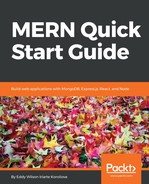Every Mongoose model has static helper methods to do several kinds of operations, such as retrieving a document. When a callback is passed to these helper methods, the operation is executed immediately:
const user = await User.findOne({
firstName: 'Jonh',
age: { $lte: 30 },
}, (error, document) => {
if (error) return console.log(error)
console.log(document)
})
Otherwise, if there is no defined callback, a query builder interface is returned, which can be later executed:
const user = User.findOne({
firstName: 'Jonh',
age: { $lte: 30 },
})
user.exec((error, document) => {
if (error) return console.log(error)
console.log(document)
})
Queries also have a .then function which can be used as a Promise. When .then is called, it first executes the query internally with .exec which then returns a Promise. This allows us to use async/await as well. Inside a async function, for instance:
try {
const user = await User.findOne({
firstName: 'Jonh',
age: { $lte: 30 },
})
console.log(user)
} catch (error) {
console.log(error)
}
There are two ways that we can make a query. One is by providing a JSON object that is used as a condition and the other way allows you to create a query using chaining syntax. The chaining syntax will feel more comfortable to developers who are more familiar with SQL databases. For example:
try {
const user = await User.findOne()
.where('firstName', 'John')
.where('age').lte(30)
console.log(user)
} catch (error) {
console.log(error)
}
